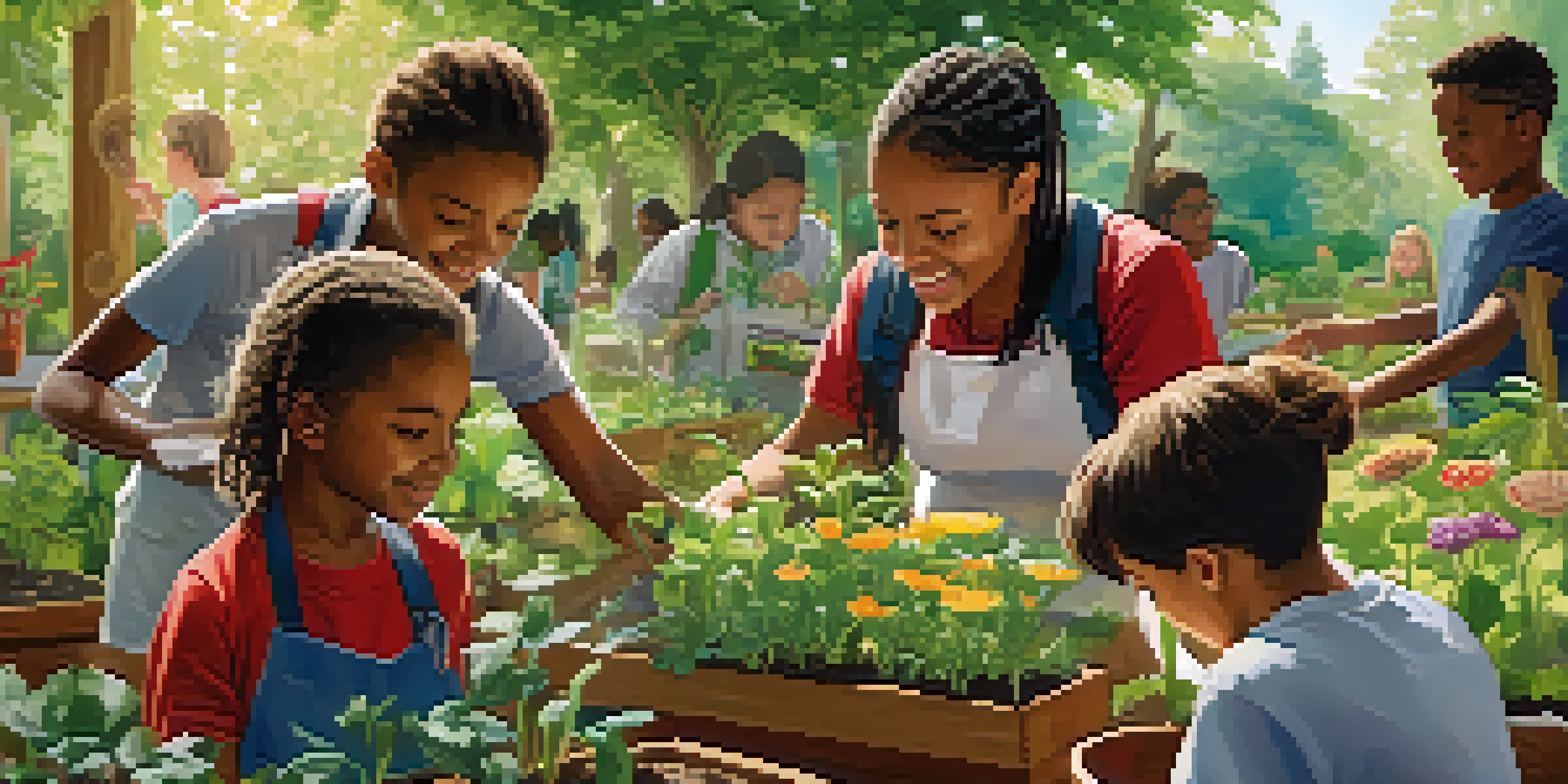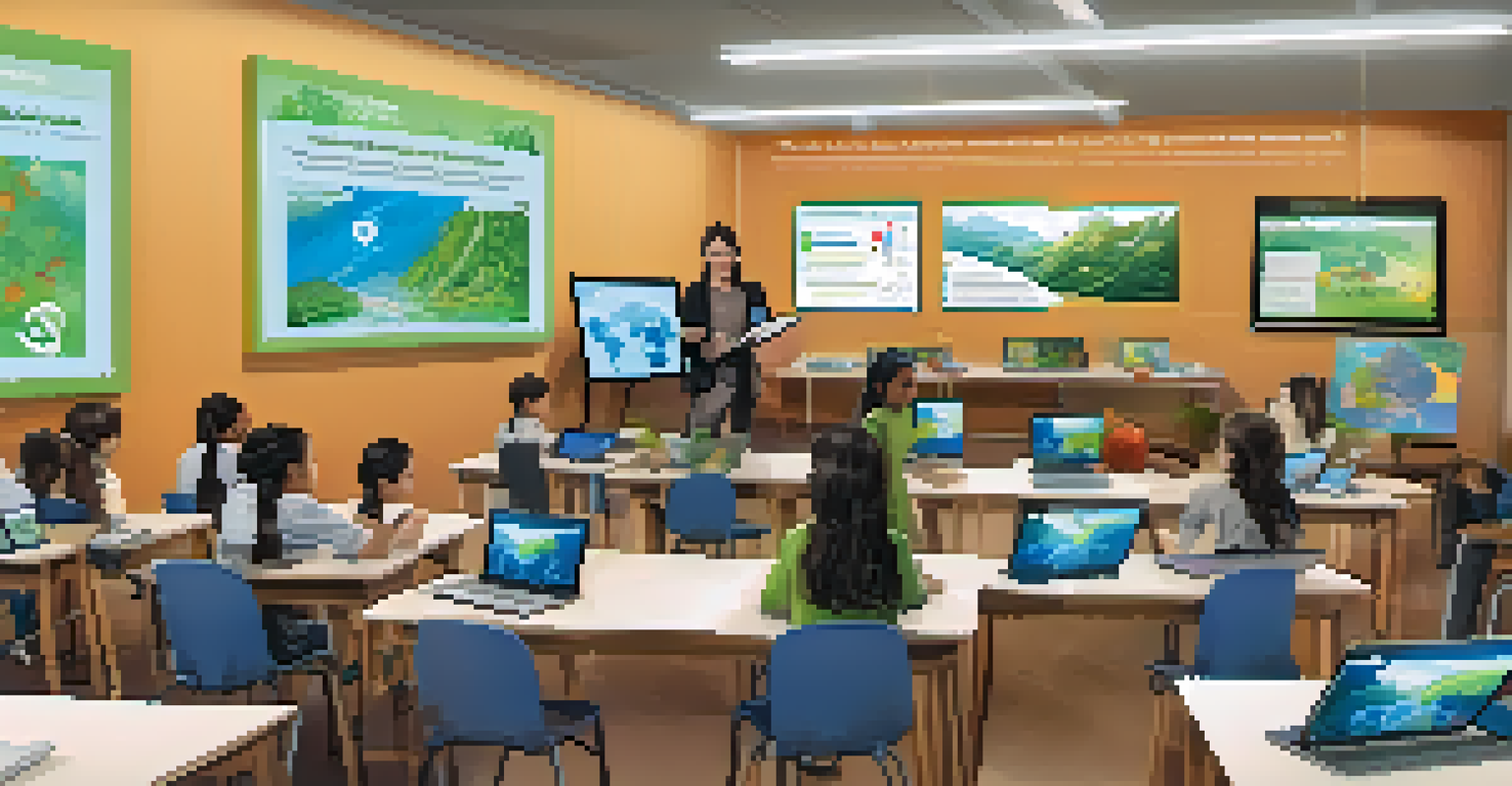Education Policy and Environmental Sustainability Initiatives

Understanding the Role of Education in Sustainability
Education plays a pivotal role in shaping our understanding of environmental issues. Through comprehensive curricula, students learn about ecosystems, climate change, and sustainable practices. This foundational knowledge empowers the next generation to make informed decisions regarding the planet's future.
Education is the most powerful weapon which you can use to change the world.
Moreover, educational institutions are increasingly becoming hubs for sustainability initiatives. Schools and universities are implementing green practices, such as recycling programs and energy-efficient facilities. These efforts not only reduce their carbon footprint but also serve as real-world teaching tools for students.
Ultimately, education fosters a culture of environmental responsibility, encouraging students to become advocates for sustainability. As they engage with these topics, they are more likely to carry these values into their personal and professional lives.
Current Education Policies Supporting Environmental Initiatives
Many countries are revising their education policies to include environmental sustainability as a core component. For example, integrating climate education into science and social studies helps students understand the interconnectedness of human actions and environmental health. These policies aim to create a holistic educational experience.

Additionally, funding for green school initiatives is becoming more common. Governments and organizations are investing in training teachers to deliver sustainability-focused lessons, ensuring that education aligns with current environmental challenges. This support is crucial for effectively equipping educators with the tools they need.
Education Shapes Sustainability Mindset
Comprehensive curricula empower students to understand environmental issues and make informed decisions.
Through these progressive policies, schools can foster a generation that not only understands sustainability but actively participates in it. By encouraging environmental stewardship from a young age, we can hope to see a significant cultural shift towards sustainability.
Challenges in Integrating Sustainability into Education
Despite the positive strides, there are challenges in integrating sustainability into education. One major hurdle is the lack of resources and training available to educators. Many teachers report feeling unprepared to teach complex environmental topics, highlighting the need for more comprehensive professional development.
The greatest threat to our planet is the belief that someone else will save it.
Furthermore, there's often a disconnect between educational policies and classroom implementation. While policies may advocate for sustainability, the actual curriculum may not reflect these values. This gap can lead to confusion and inconsistency in how environmental issues are taught.
To address these challenges, collaboration between policymakers, educators, and environmental organizations is essential. By working together, they can create a cohesive approach that ensures sustainability education is effective and impactful across all levels of learning.
Successful Case Studies in Environmental Education
Several schools and districts have successfully implemented sustainability programs that serve as inspiring models. For example, some schools have adopted garden-based learning, where students cultivate their own gardens. This hands-on experience teaches them vital lessons about food systems and the environment.
Another noteworthy example is the integration of outdoor classrooms, which connect students directly with nature while providing immersive learning experiences. These initiatives not only enhance student engagement but also foster a deeper appreciation for the environment.
Community Engagement Enhances Learning
Collaborative programs with local organizations make sustainability education more relevant and impactful.
Such case studies highlight the potential of innovative educational practices to inspire meaningful change. By showcasing successful examples, we can encourage other institutions to adopt similar programs and contribute to a more sustainable future.
The Role of Technology in Environmental Education
Technology plays a crucial role in enhancing environmental education. Interactive tools, such as virtual labs and online platforms, allow students to explore complex environmental concepts in an engaging way. These technologies can bridge the gap between theoretical knowledge and practical application.
Moreover, online resources and communities provide educators with access to a wealth of information and teaching materials. This accessibility allows teachers to stay updated on the latest sustainability practices and incorporate them into their lessons. It also fosters collaboration among educators across the globe.
As technology continues to advance, it will likely play an even greater role in shaping the future of environmental education. By leveraging these tools, we can make learning about sustainability more dynamic and impactful for students everywhere.
Community Involvement in Sustainability Education
Community involvement is essential for effective sustainability education. Local organizations, businesses, and families can collaborate with schools to create programs that address specific environmental issues in their area. This localized approach makes learning more relevant and impactful for students.
Additionally, community projects, such as clean-up days or tree-planting events, provide students with hands-on experience in environmental stewardship. These initiatives not only foster a sense of responsibility but also strengthen community bonds, highlighting the collective effort required to tackle environmental challenges.
Technology Transforms Environmental Education
Interactive tools and resources enhance student engagement and provide teachers with valuable teaching materials.
By engaging the community in sustainability education, we can create a supportive ecosystem that encourages lifelong learning and action. This collaboration amplifies the message of sustainability, making it a shared priority for everyone involved.
Future Directions for Education Policy and Sustainability
Looking ahead, the integration of sustainability into education policy will likely continue to evolve. As environmental issues become more pressing, educational institutions will need to adapt their curricula to reflect these realities. This adaptability is necessary to prepare students for the challenges they will face in the future.
Moreover, there is a growing recognition of the need for interdisciplinary approaches to education. Combining subjects like science, social studies, and arts can create a richer understanding of sustainability. This holistic approach can help students see the bigger picture and understand the interconnectedness of various systems.

Finally, ongoing evaluation and feedback from educators, students, and communities will be crucial in shaping effective policies. By prioritizing these insights, we can foster an educational landscape that truly supports environmental sustainability and empowers future generations.